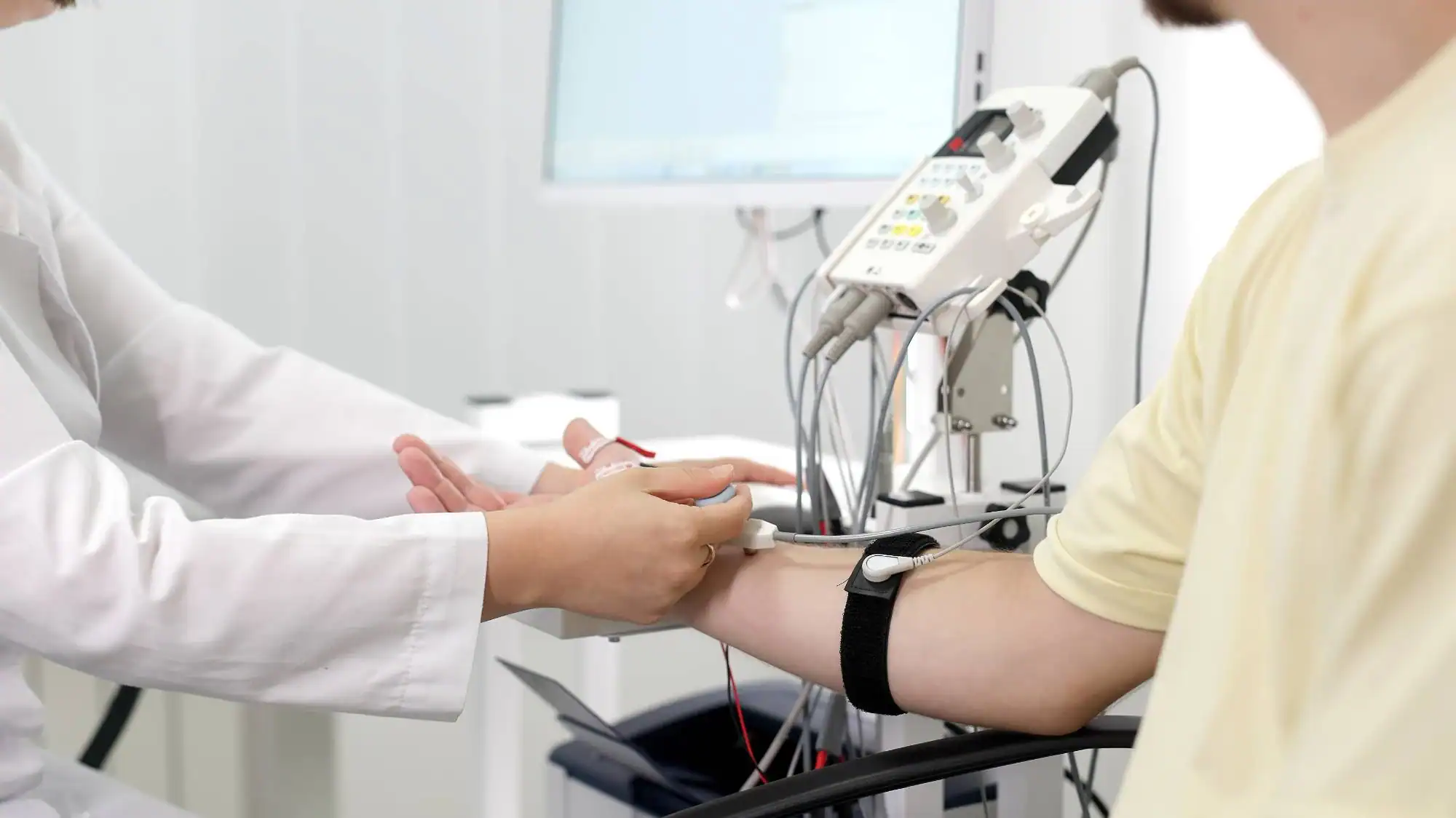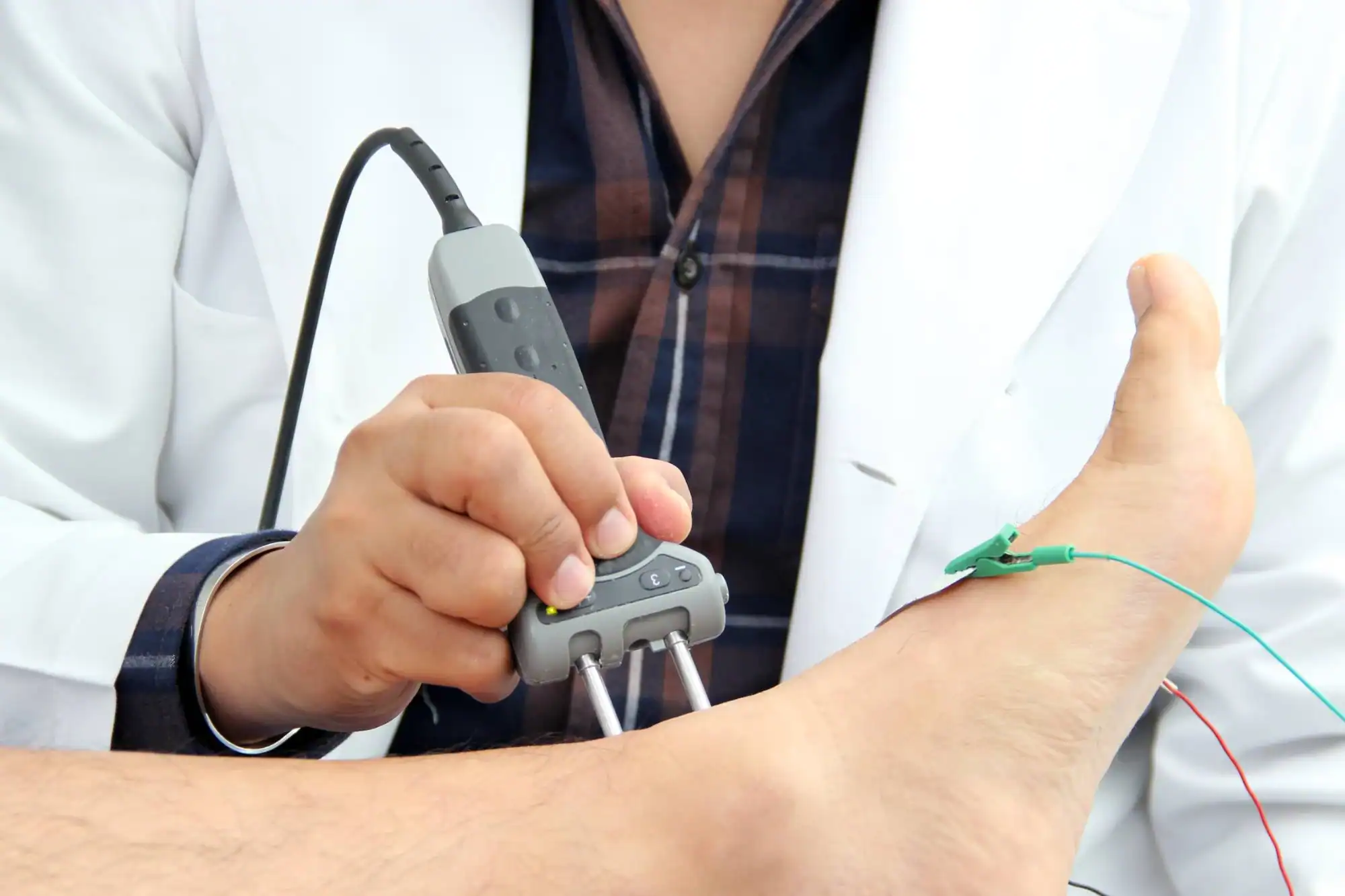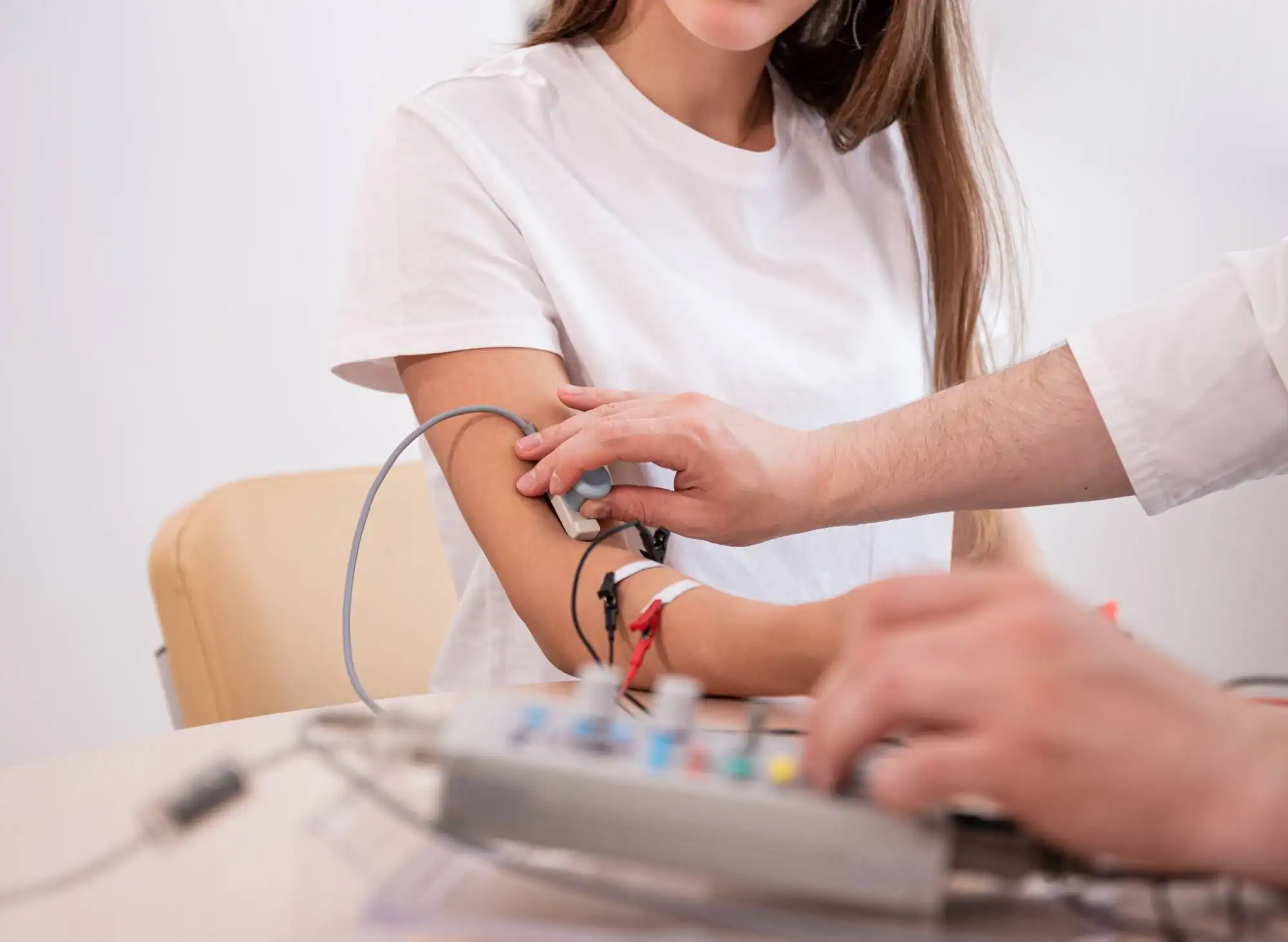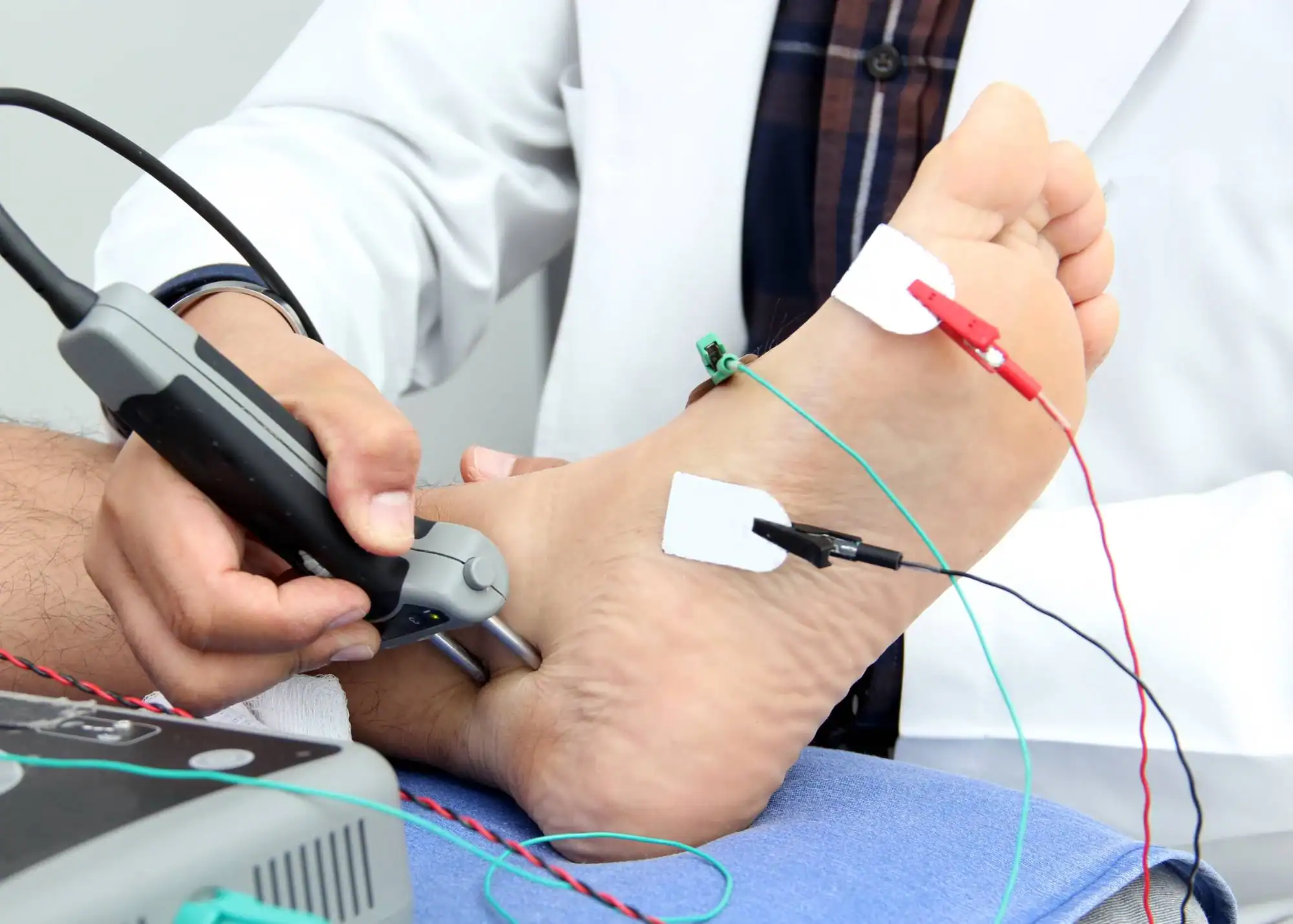Advanced nerve and muscle diagnostic testing to pinpoint what’s causing your pain, numbness, or weakness.


You’ve been dealing with numbness, tingling, or muscle weakness long enough. The uncertainty is exhausting, and you need real answers to move forward with the right treatment.
Our nerve and muscle testing gives you those answers. Through electromyography (EMG) and nerve conduction studies, we measure exactly how your nerves and muscles are functioning. No more guessing about whether you have carpal tunnel, sciatica, diabetic neuropathy, or another condition.
When you know what’s actually happening in your body, you can make informed decisions about treatment. You’ll avoid unnecessary procedures, wasted time on treatments that don’t address the root cause, and the frustration of managing symptoms without understanding them.
NY Spine Medicine has been providing specialized diagnostic services to Florida communities for years. Our board-certified physicians focus specifically on spine, nerve, and muscle conditions.
We understand that finding quality nerve and muscle testing in smaller Florida communities can be challenging. That’s why we’ve made advanced diagnostic capabilities available right here in Cooperstown.
Our team combines extensive medical training with the latest diagnostic equipment to give you accurate results you can rely on for your treatment decisions.

Your nerve and muscle testing appointment starts with a discussion of your symptoms and medical history. We need to understand when your symptoms started, what makes them better or worse, and how they’re affecting your daily life.
The EMG portion involves placing small electrodes on your skin or inserting thin needles into specific muscles to measure electrical activity. For nerve conduction studies, we use electrodes to send mild electrical pulses along your nerves and measure how quickly and completely the signals travel.
Most patients find the testing tolerable, though you may feel some mild discomfort during needle insertion. The entire process typically takes 30-60 minutes depending on which nerves and muscles we’re evaluating. You’ll receive your results during the appointment, along with a clear explanation of what they mean for your condition and treatment options.

Ready to get started?
Your nerve and muscle testing includes both EMG and nerve conduction studies to give us a complete picture of your condition. We test multiple nerve pathways and muscle groups to identify exactly where problems are occurring.
Many Cooperstown patients come to us after months of uncertainty about conditions like carpal tunnel syndrome, ulnar neuropathy, radiculopathy, or peripheral neuropathy. Our testing distinguishes between these conditions and determines the severity of nerve or muscle damage.
You’ll receive a detailed report explaining your results in plain language, plus recommendations for next steps. Whether that’s physical therapy, medication, injections, or other treatments, you’ll have the information needed to make the best decision for your situation.
